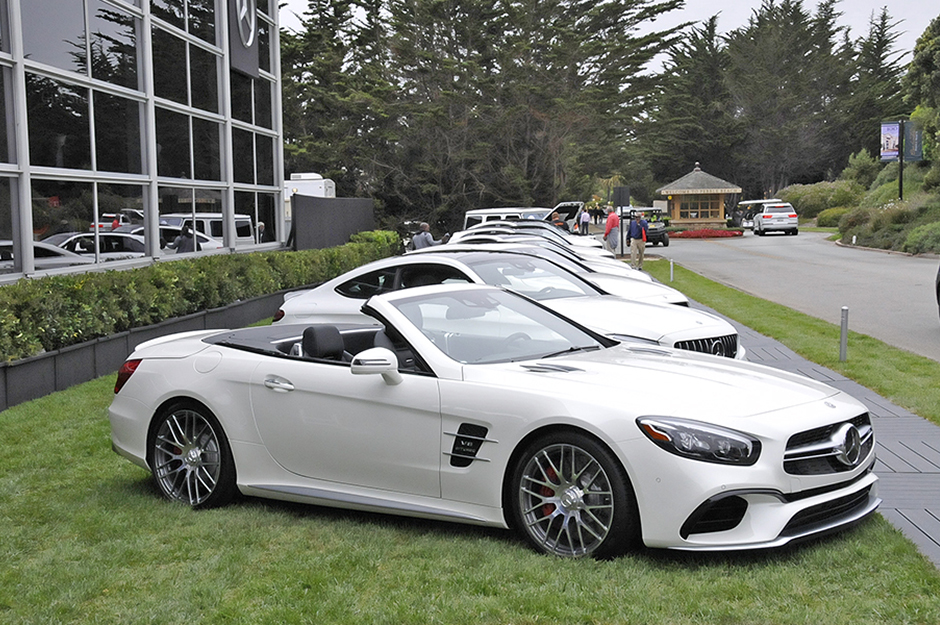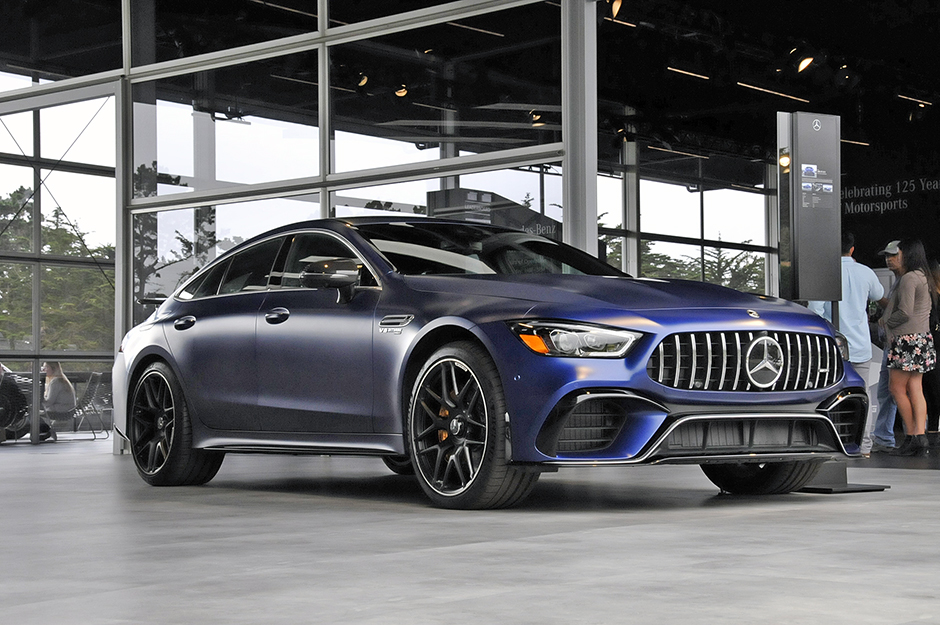
Mercedes-Benz Classic Center
125 Years of Motor Sport
The Mercedes-Benz Classic Center treated those who visited their expansive Star Lounge during the Monterey Car week last month to an extraordinary display. The arc of their motor sports success over the last 125 years was on full view via a group very special racing cars.
Racing success for Mercedes began with the Paris-Rouen race in July 1894, an event conceived to demonstrate the durability this dubious recent contraption called the ‘automobile’. Cars produced by Peugeot and Panhard & Levassor and fitted with Daimler designed 3.75 HP V twin engines won first prize in the event.
And these French cars repeated their success in June 1895 during the Paris to Bordeaux and back to Paris event, the globe’s first timed automobile competition event. The evolution of the motor racing car could be vividly traced as visitors wandered from car to car. Each represented the peak of motor racing technology of its era.
The Indy establishment was stunned by Penske and Mercedes’ shrewd use of Indy’s rule book.
___________________________________________________________________________________________________________
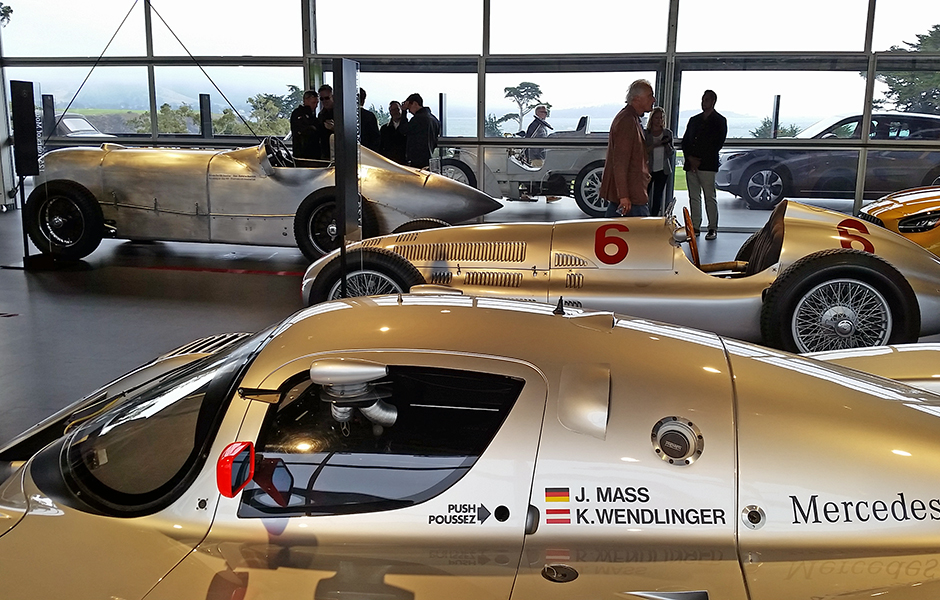
The Classic Center curated a stunning tribute to MB’s 125 years of involvement in the highest levels of motor racing. Even the most jaded racing enthusiast couldn’t help but be impressed.
Silver, Red and White arrows
Being able to carefully inspect the 3 litre 475 HP W154 Grand Prix car was rare treat, particularly because the Classic Center cleverly cut away much of the coachwork on one side. This car dominated the final two years of Grand Prix racing before the dark veil of WW 2 fell over Europe.
The W154 won the 1938 European Championship with Rudi Caracciola at the wheel and the 1939 title with Hermann Lang driving. It was end of the era for these F1 ‘Titans’. The intricate workmanship and complication of the W154 was fascinating.
___________________________________________________________________________________________

Cutaway W154 revealed Mercedes Competition department’s pre-war technical sophistication and industrial artistry. One could imagine technical director Rudi Uhlenhaut standing by while his mechanics readied the V12 for anther evaluation drive. L-R behind the W154: 1994 Penske-Mercedes PC 23 – 1989 Sauber C9 – 1955 300SLR.
1994 Indy Stunner
The placard adjacent to the Marlboro liveried Penske-Mercedes PC-23 noted a ‘loophole’ in the Indy regulations that Roger Penske took advantage of. In fact, this loophole was unique to Indy, the only race on the 1994 schedule that followed USAC regulations.
USAC’s rulebook allowed purpose-built engines fitted with push-rod valve actuation – 4 overhead cam engines were the norm at that time – to run 10 lbs more turbo boost and displace over half a litre additional engine capacity.
Penske, collaborating with his long time engine builder Illmor, famously designed, constructed and tested a one-off Mercedes-Benz badged push-rod V8 in complete secrecy for 1994 Indy classic. With a massive power advantage, Al Unser Jr. dominated the event and went on to win the CART Championship.
The Indy establishment was stunned by Penske and Mercedes’ shrewd use of Indy’s rule book. The car was one race wonder and never run again. What a treat to see this 1,000 HP rocket up close.
___________________________________________________________________________________________

One race wonder. The canny Roger Penske utilized a USAC rule that favored push rod engines (209.3 cid vs. 161.7 cid and 10 lbs additional turbo boost) over the 4-overhead cam engines of the day. His PC-23 produced about 200 HP more than the then current Indy cars. Al Unser was approaching almost 250 MPH on Indy’s back straight during his dominant 1994 race.
Sports Cars
In addition to the Silver Star’s open wheel successes, which of course continue today with their dominance of the F1 scene, Mercedes’ decades of sports car racing success is a massive component of their racing past as well. The Classic Center treated us to two legendary sports cars, the fabled 1955 300SLR and it’s 1989 sports car brother, the bellowing Sauber Mercedes C9.
Star Lounge visitors could revel in the 300SLR’s design intricacies: the outside lace wire wheels, the intricate gated push button shift mechanism, and of course the side exhaust extractors that produce such a deafening racket under power. Detectives of this era know that this is not THE 300SLR – Stirling Moss and Denis Jenkinson drove number 722 to an epic victory in the 1955 Mille Miglia – but it was a sight to behold. And it would certainly be one of the most valuable automobiles in the world if it ever came to market.
Sauber C9
Another successful racing collaboration was the 1989 Sauber Mercedes C9. Combining Mercedes-Benz racing engine technology with Peter Sauber’s established race car production and team management skills resulted in World Sports car dominance in 1989/90. This car’s prodigious Mulsanne straight speed – clocked at 248 MPH – helped secure the 1989 Le Mans victory for drivers Jochen Mass, Manuel Reuter, and Stanley Dickens. An epic sports car indeed.
Thank you Mercedes Classic for treating us to a stunning glimpse of your motor racing past. For more images from the Star Lounge, be sure to scroll the gallery at the bottom of the page.
___________________________________________________________________________________________
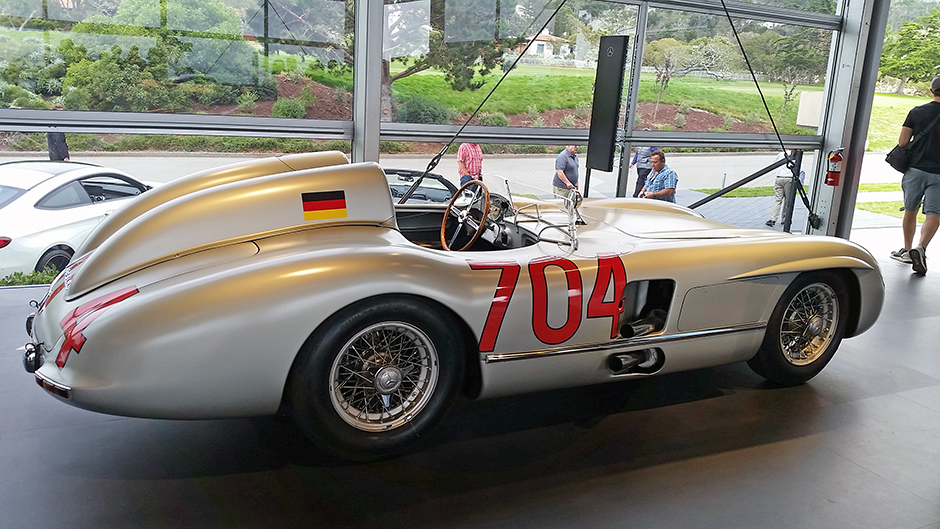
1955 Mille Miglia competitors were numbered according to their starting time on the day of the event. Hence this 300SLR rolled of the starting ramp at 7:04 AM. Note outside lace wire wheels, enormous side pipes and twin headrests. Dominating sports car racing in 1955 required but 302 HP.
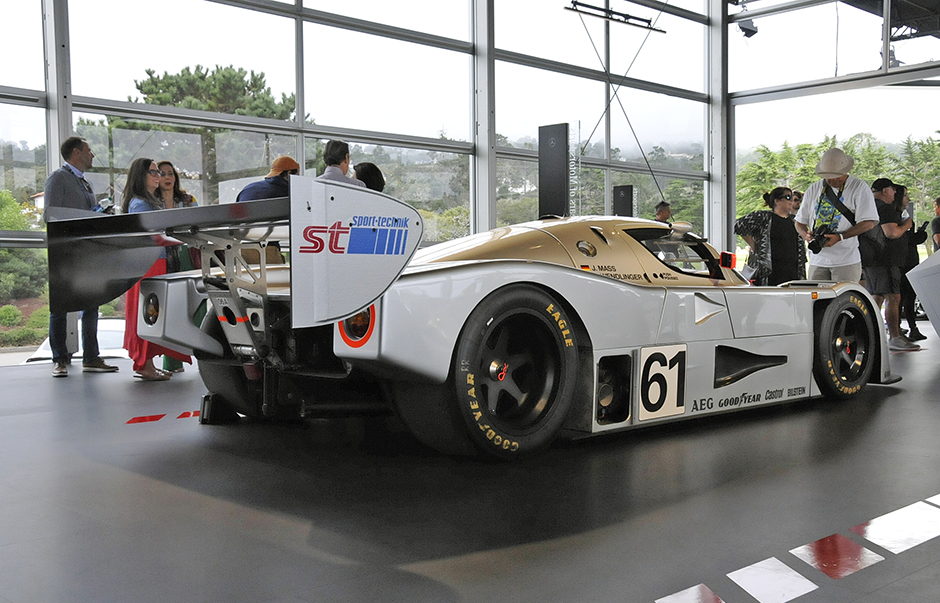
Staying on top of sports car racing in 1989 required 720 HP. The bellowing Sauber Mercedes C9 is powered by a 5 litre twin-turbo Mercedes V8. Wins at Le Mans in 1989 and successive World Championships in 1989/1990 secured this car’s position in MB’s 125 year motor sport history.
roy spencer/editor mercedesheritage.com
photography/mercedesheritage.com
Was this article interesting? Subscribe to our e-newsletter.
